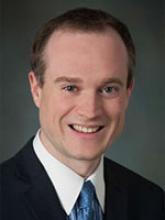Relaxation is everywhere
Date & Time:
Fri, 04/06/2018 - 2:30pmSpeaker:
John MauroAffiliation:
Pennsylvania State UniversityLocation:
Discovery Park B155
Abstract:
As a nonequilibrium material, a glass is continually relaxing towards its metastable supercooled liquid state. A comprehensive understanding of glass relaxation is of critical importance for many high-tech applications of glass, including optical fiber, glass substrates for liquid crystal displays, and chemically strengthened cover glass for electronic devices. In this presentation, I will review the current state-of-the-art in understanding the dynamics of glass relaxation, including the physical origins of its non-Arrhenius and non-exponential characters.

Biography:
Prof. John Mauro earned a B.S. in Glass Engineering Science (2001), B.A. in Computer Science (2001), and Ph.D. in Glass Science (2006), all from Alfred University. He joined Corning Incorporated in 1999 and served in multiple roles there, including Senior Research Manager of the Glass Research department. John joined the faculty at Penn State in 2017 and is currently a world-recognized expert in fundamental and applied glass science, statistical mechanics, computational and condensed matter physics, thermodynamics, and the topology of disordered networks. John is the inventor or co-inventor of several new glass compositions for Corning, including Corning Gorilla® Glass products. John is a pioneer in the use of physics-based modeling for the design of new glassy materials. He is the inventor of new models for supercooled liquid and glass viscosity, glass structure and topology, relaxation behavior, and thermal and mechanical properties. John has published over 190 peer reviewed publications with an h index of 37. He has also been granted 34 patents with 35 more pending. John is Editor of Journal of American Ceramic Society and Associate Editor of International Journal of Applied Glass Science. John is a Fellow of American Ceramic Society and recipient of a number of awards, which include the N.J. Kreidl Award of American Ceramic Society, W.A. Weyl International Glass Science Award and V. Gottardi Prize from International Commission on Glass (ICG), Sir Alastair Pilkington Award of Society of Glass Technology of UK, and W.H. Zachariasen Award of Journal of Non-Crystalline Solids.
Department:
Materials Science and Engineering